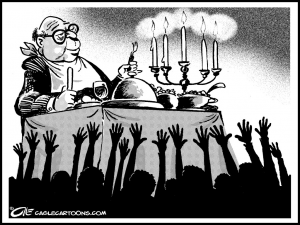[Part 1] [Part 2] [Part 3] […] [Part 5]
This five part series will explore at length (warning!) and in detail (another warning—wonk alert!) the MMT perspective on the debt ratio and fiscal sustainability. While the approach suggests a macroeconomic policy mix and strategies for both fiscal and monetary policies that most neoclassical economists currently believe are unsustainable, ultimately the MMT preference for a significant role for fiscal policy in macroeconomic stabilization is shown to be consistent with traditional neoclassical views on fiscal sustainability.
This fourth part integrates the content of the first three parts with the functional finance strategy for fiscal policy. Warning again—this part is the longest and most detailed of the four. Continue reading



 Rational public debate about the economy and government’s role in the economy is currently in extremely short supply. In a
Rational public debate about the economy and government’s role in the economy is currently in extremely short supply. In a 








